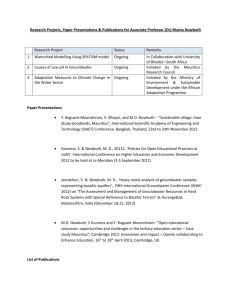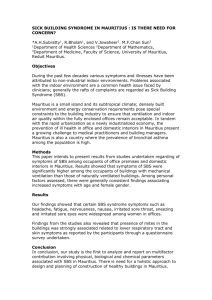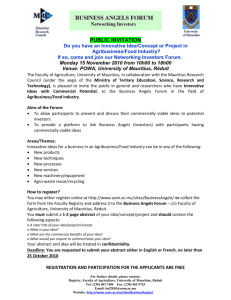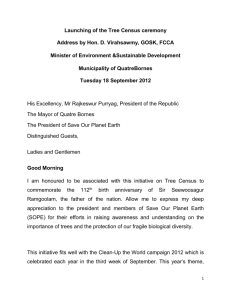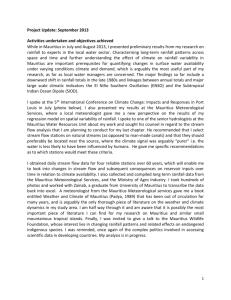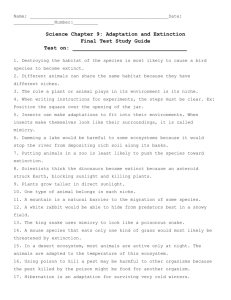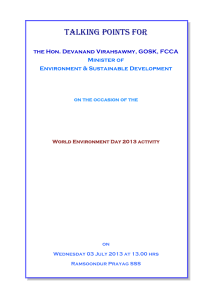Critically endangered animal: Aaptosyax grypus (Mekong Giant
advertisement
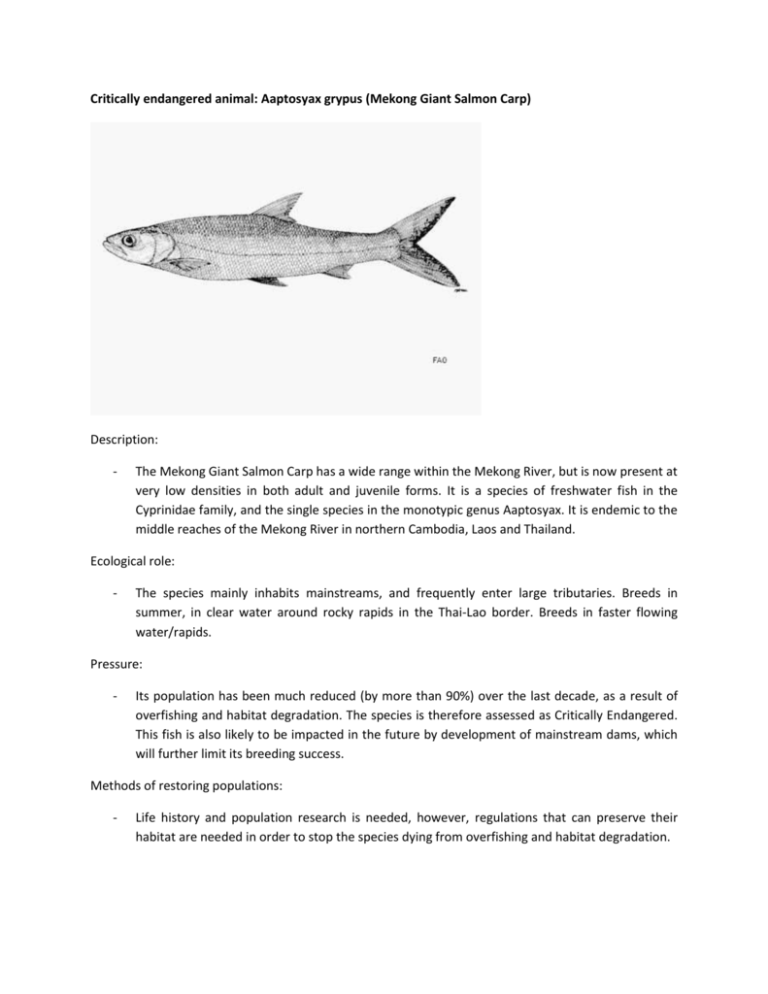
Critically endangered animal: Aaptosyax grypus (Mekong Giant Salmon Carp) Description: - The Mekong Giant Salmon Carp has a wide range within the Mekong River, but is now present at very low densities in both adult and juvenile forms. It is a species of freshwater fish in the Cyprinidae family, and the single species in the monotypic genus Aaptosyax. It is endemic to the middle reaches of the Mekong River in northern Cambodia, Laos and Thailand. Ecological role: - The species mainly inhabits mainstreams, and frequently enter large tributaries. Breeds in summer, in clear water around rocky rapids in the Thai-Lao border. Breeds in faster flowing water/rapids. Pressure: - Its population has been much reduced (by more than 90%) over the last decade, as a result of overfishing and habitat degradation. The species is therefore assessed as Critically Endangered. This fish is also likely to be impacted in the future by development of mainstream dams, which will further limit its breeding success. Methods of restoring populations: - Life history and population research is needed, however, regulations that can preserve their habitat are needed in order to stop the species dying from overfishing and habitat degradation. Extinct: Alectroenas nitidissima (Mauritius Blue-pigeon) Description: - The Mauritius Blue Pigeon (Alectroenas nitidissima) is an extinct species of blue pigeon formerly endemic to the Mascarene island of Mauritius in the Indian Ocean east of Madagascar. It has two extinct relatives from the Mascarenes and three extant ones from other islands. It is the type species of the genus of blue pigeons. It had white hackles around the head, neck and breast and blue plumage on the body, and it was red on the tail and the bare parts of the head. Ecological role: - Very little is known, although it evidently inhabited the islands forests, although there is a curious reference provided by Desjardins to it living alone near riverbanks where it fed on fruit and freshwater mollusks. Fruits and nuts were probably the mainstay of the Mauritius Blue Pigeon's diet, and like other blue pigeons, it may have occupied the upper canopy, and migrated seasonally to where food was available. Pressure: - Indiscriminate hunting has led the species to extinction. Also habitat loss caused the species’ extinction. Consequences of the disappearance: - Many other endemic species of Mauritius became extinct after the arrival of man, so the ecosystem of the island is severely damaged and hard to reconstruct. Before humans arrived, forests covered Mauritius entirely, but very little remains today because of deforestation. Conservation status has been improved by intervention: Accipiter striatus (Sharp-shinned Hawk) Description: - It is the smallest hawk in the United States and Canada. This species has an extremely large range, and hence does not approach the thresholds for Vulnerable under the range size criterion. The population trend appears to be increasing, and hence the species does not approach the thresholds for Vulnerable under the population trend criterion. Females are larger in size and adults have short broad wings and a long square-ended tail banded in blackish and grey. Ecological role: - The species inhabits a wide variety of habitats, depending on the region, including boreal coniferous forests, temperate deciduous woodland, tropical and subtropical cloud forest, gallery forest and semi-open savanna woodland. Outside the breeding season, North American birds can be found in almost any terrain, including urban areas with trees. These birds surprise and capture all their prey from cover or while flying quickly through dense vegetation. They are adept at navigating dense thickets and many attacks are successful, although this hunting method is often hazardous to the hawk. Pressures: - Habitat alteration, especially removal of forest, is thought to affect some populations. Methods for restoring populations: - In North America this bird declined in numbers in the 1960s and 1970s, probably as a result of the use of DDT and other pesticides. The population of USA and Canada has rebounded since and might even exceed historical numbers today. This is probably due to the combination of the ban on DDT and the proliferation of backyard birdfeeders in North America which create unnaturally reliable and easy prey for them.
